-
You are viewing the forum as a Guest, please login (you can use your Facebook, Twitter, Google or Microsoft account to login) or register using this link: Log in or Sign Up
You are using an out of date browser. It may not display this or other websites correctly.
You should upgrade or use an alternative browser.
You should upgrade or use an alternative browser.
Greenhouse Pond
- Thread starter Tyko_N
- Start date
Yes good insulation makes a big difference, we have insulated the ground around, double glazing, and plugged even the smallest gaps in the foundation. We can also put some extra styrofoam across the lower parts of the windows if needed, but we managed well without this year. As soon as the sun comes out I think the ceiling fans are the most important thing though, without them the top air would warm up rapidly until the automatic ceiling windows opened and let it out, now that air is pushed back down and can help heat the ground instead, they also make a huge difference in distributing heat during cold weather; without them the corner areas would easily freeze even if the central parts were above +10C.
Slight delay in spring arrival, -20C outside this morning and we got some more snow yesterday, not the weather I was hoping for... The greenhouse looks a bit lonely, as the only green thing around here:
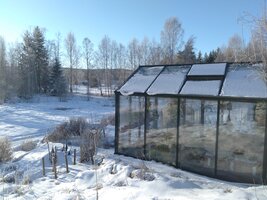
All's well inside though, and there's no stopping some plants now, with fresh growth and flowers showing up on a daily basis. Only drawback is that the aphids are doing well too, so I'll have to get some parasitic wasps to control them once the weather warms up a bit. No aquatics footage this time, but here's some greenery (and reddery) to brighten up your day:
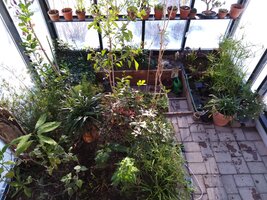
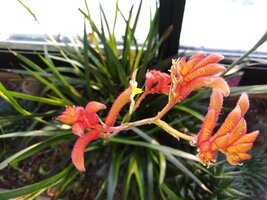
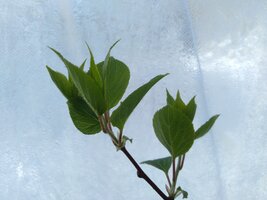
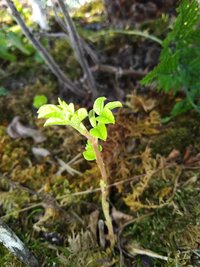
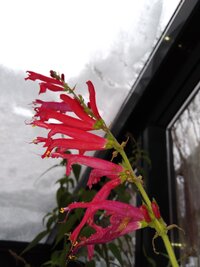
Plants are kangaroo paw plant (Anigozanthos sp), hardy kiwi (Actinidia arguta), liquorice plant (Glycyrrhiza glabra), and pineapple sage (Salvia elegans).

All's well inside though, and there's no stopping some plants now, with fresh growth and flowers showing up on a daily basis. Only drawback is that the aphids are doing well too, so I'll have to get some parasitic wasps to control them once the weather warms up a bit. No aquatics footage this time, but here's some greenery (and reddery) to brighten up your day:





Plants are kangaroo paw plant (Anigozanthos sp), hardy kiwi (Actinidia arguta), liquorice plant (Glycyrrhiza glabra), and pineapple sage (Salvia elegans).
Now we're getting somewhere! The Cyperus alternifolius has started flowering, and there is plenty of greenery sprouting at the bottom of the pond; since I've been tossing in any intersting-looking aquatic plant I've found around here I'm not sure what everything is yet, but there is at least some Ceratophyllum, Lysimachia nummularia, and Callitriche sp, plus an annoying amount of moss and algae floating around.
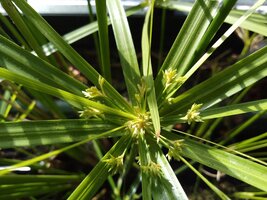
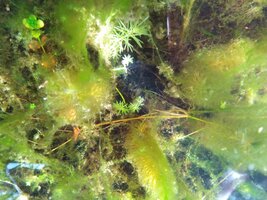
In the bog there's a nice surprise, a Dactylorhiza maculata has turned up. I get my Sphagnum from an area that we had to clear-cut about 20 years ago due to spruce beetles, and this exposed a small wet patch with nice looking Sphagnum. A few years later the first D. maculata appeared so we decided to try and keep that spot open and sunny for them, fast forward a bit and now we find more of them every year (picture from last summer of a couple of plants). A piece of tuber must have hitched a ride when I gathered moss, and it looks healthy enough for now so hopefully I can keep it alive.
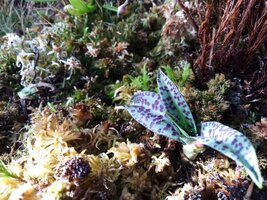
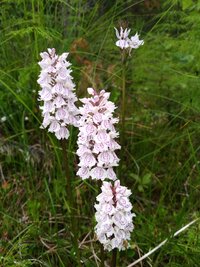
The Sarracenias are also beginning to grow, the older 'Judith Hindle', a S. leucophylla I got last autumn, and a few S. purpurea started from seeds last spring. Pretty much the only one that hasn't woken up yet is the Cyperus esculentus, but the tubers are looking good so I'm optimistic.
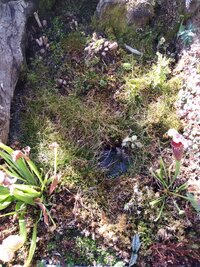
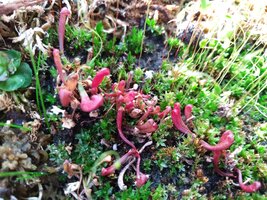
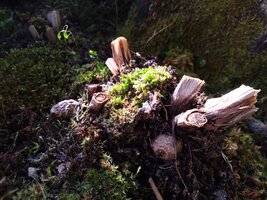
Lastly, at the other end of the greenhouse the Paphiopedilum has finally opened it's flower bud (after growing it all through winter), so I'm going to count that as the official start of spring
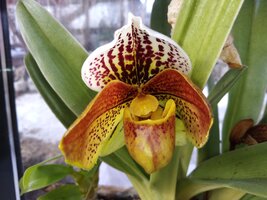


In the bog there's a nice surprise, a Dactylorhiza maculata has turned up. I get my Sphagnum from an area that we had to clear-cut about 20 years ago due to spruce beetles, and this exposed a small wet patch with nice looking Sphagnum. A few years later the first D. maculata appeared so we decided to try and keep that spot open and sunny for them, fast forward a bit and now we find more of them every year (picture from last summer of a couple of plants). A piece of tuber must have hitched a ride when I gathered moss, and it looks healthy enough for now so hopefully I can keep it alive.


The Sarracenias are also beginning to grow, the older 'Judith Hindle', a S. leucophylla I got last autumn, and a few S. purpurea started from seeds last spring. Pretty much the only one that hasn't woken up yet is the Cyperus esculentus, but the tubers are looking good so I'm optimistic.



Lastly, at the other end of the greenhouse the Paphiopedilum has finally opened it's flower bud (after growing it all through winter), so I'm going to count that as the official start of spring

Some setbacks and a few happy surprises so far this year. Most annoyingly the Azolla didn't make it in the end, maybe due to too low nutrient levels? For the summer I've replaced it with Salvinia, but we'll see about next year. Current looks of that corner of the greenhouse:
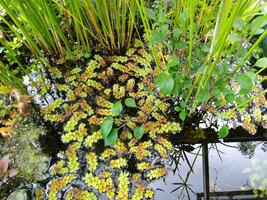
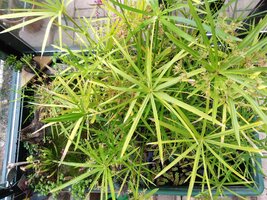
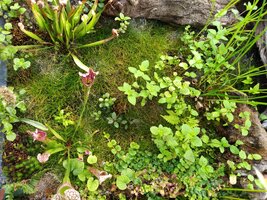
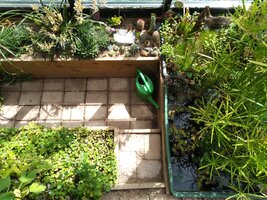
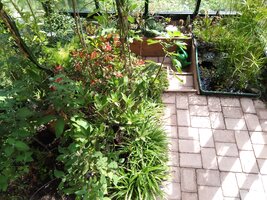
Quite a lot of growth, especially from the Cyperus alternifolius which might have hogged the nutrients. The water part is harder to get photos of, but there is at least some Utricularia and Sagittaria subulata doing well in there, and I've added some Lobelia cardinalis (still submerged) and Ludwigia palustris (based on flower shape) which should hopefully survive winter. There's some emersed Hygrophila in there as well for now, since I had some that needed removal indoors, it isn't winter hardy though.
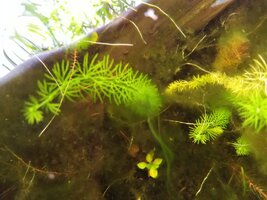
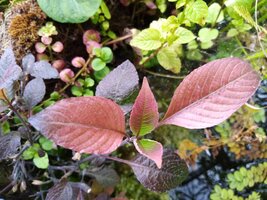
The bog area is doing even better, Eleocharis, mint and Lysimachia is growing rampant, while the Sarracenias and Cyperus esculentus are putting out some new growth. The 'Judith Hindle' also flowered earlier, together with the Dactylorhiza maculata. New additions include some Ludwigia and Lobelia here too, along with a venus flytrap (actually added late last autumn, so it got a rough start). Not much more planned for this area now, other than letting everything grow in and maybe add another Sarracenia or two.
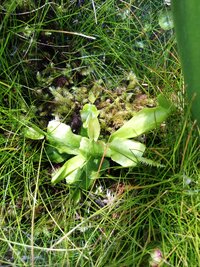
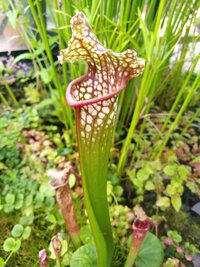
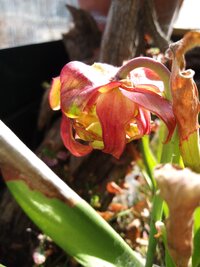
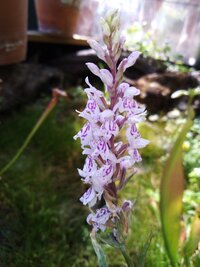





Quite a lot of growth, especially from the Cyperus alternifolius which might have hogged the nutrients. The water part is harder to get photos of, but there is at least some Utricularia and Sagittaria subulata doing well in there, and I've added some Lobelia cardinalis (still submerged) and Ludwigia palustris (based on flower shape) which should hopefully survive winter. There's some emersed Hygrophila in there as well for now, since I had some that needed removal indoors, it isn't winter hardy though.


The bog area is doing even better, Eleocharis, mint and Lysimachia is growing rampant, while the Sarracenias and Cyperus esculentus are putting out some new growth. The 'Judith Hindle' also flowered earlier, together with the Dactylorhiza maculata. New additions include some Ludwigia and Lobelia here too, along with a venus flytrap (actually added late last autumn, so it got a rough start). Not much more planned for this area now, other than letting everything grow in and maybe add another Sarracenia or two.




Hi all,
cheers Darrel
It does tend to "boom and bust". I assume that it is a nutrient issue, but I don't know what causes it.Most annoyingly the Azolla didn't make it in the end, maybe due to too low nutrient levels?
cheers Darrel
Hi all,
cheers Darrel
This is what says about nitrogen fixation <"Growing Azolla to produce sustainable protein feed: the effect of differing species and CO2 concentrations on biomass productivity and chemical composition">:but I don't know what causes it.
So it isn't a nitrogen issue, but it looks like it might be phosphorus (P) limitation. <"Growing Azolla - Azolla Foundation.">....... A unique feature of Azolla ferns is that they host nitrogen (N2)‐fixing cyanobacteria, Nostoc azollae, in the cavities of their leaves.13, 14, 15 These phototrophic symbionts fix N2 during the day and likely release it as NH4 + in the leaf cavities to be taken up by the ferns.16, 17 Nitrogen fixation by N. azollae of 0.15–0.17 mg N h−1 per gram of dry biomass is remarkably high .......... Effectively, the N. azollae symbiont is capable of supplying all the nitrogen (1100–1200 kg N ha−1 per year) required for the fern's rapid growth.
I've found that it usually goes red before dwindling away, so next time I'll give it some PO4--- and see what happens.Phosphorus
Phosphorus is the most important and often the limiting nutrient for azolla growth. Its deficiency is indicated by smaller, less vigorous plants and may cause the plants to become pink to deep red and fragile and to develop very long roots.
cheers Darrel
Last edited:
Worth a try, and in my case that might just be a matter of doing a waterchange. Our tap water seems to be very low in nitrogen but with a bit more phosphorus, based on heavy feeders like duckweed and Ceratophyllum struggling and cyanobacteria instead of (more attractive) green algae, so adding some more of that should reset the nutrient imbalance to the Azollas favour. Now I just needs to find a fresh batch to try.I've found that it usually goes red before dwindling away, so next time I'll give it some PO4--- and see what happens.
Hi all,
cheers Darrel
Maybe tricky, now that they've decided that all the plants (whatever they are sold as) are A. filiculoides and<" invasive">. I'm not quite sure what the situation is at the moment (<"post Brexit">), but you would be more than welcome to some of mine, sent to <"N. Ireland"> first?Now I just needs to find a fresh batch to try.
cheers Darrel
Can't find anything recent about the classification in the EU, but I guess it's only a matter of time before it ends up on a list here as well. Annoying for me, but probably a good thing in the long run. Might be time to look into Trapa natans again instead, have tried it before indoors (unsuccessfully), the greenhouse should suit it better though considering its natural range.Maybe tricky, now that they've decided that all the plants (whatever they are sold as) are A. filiculoides and<" invasive">.


